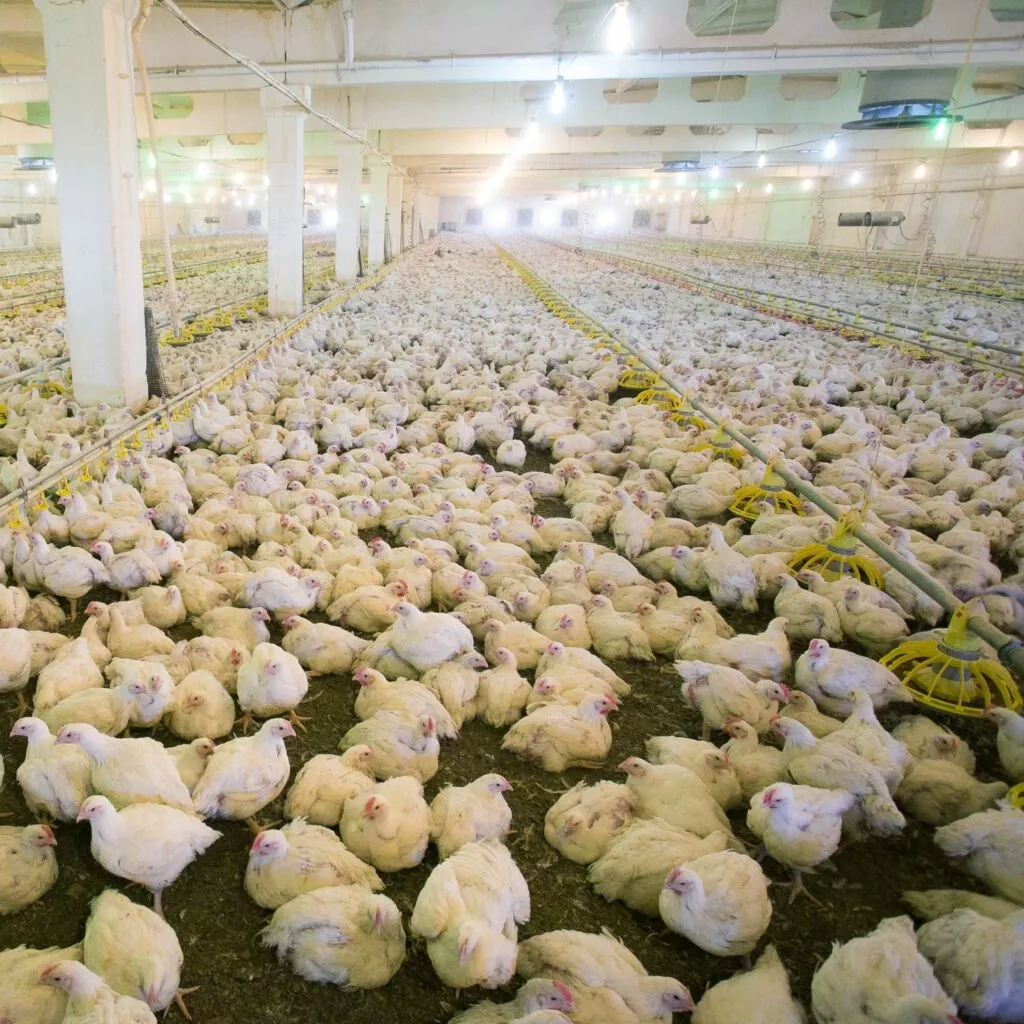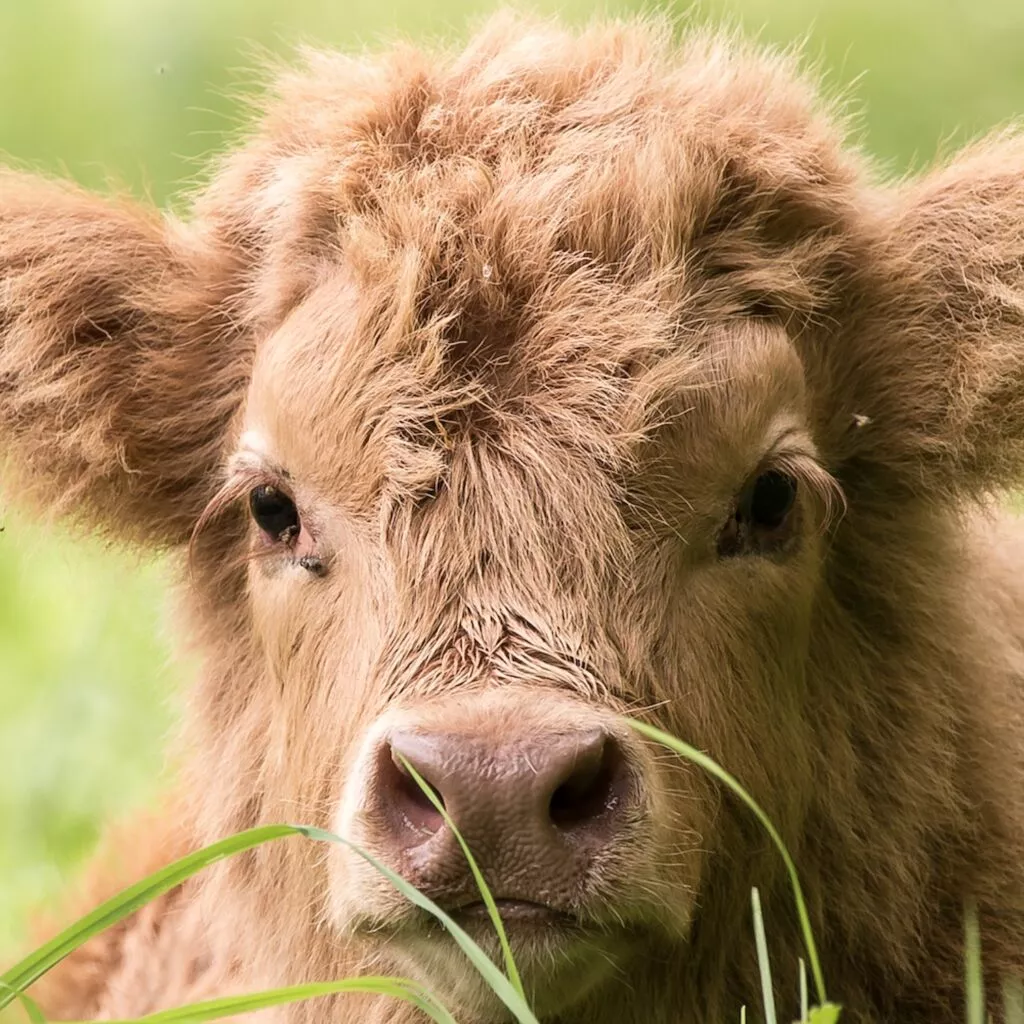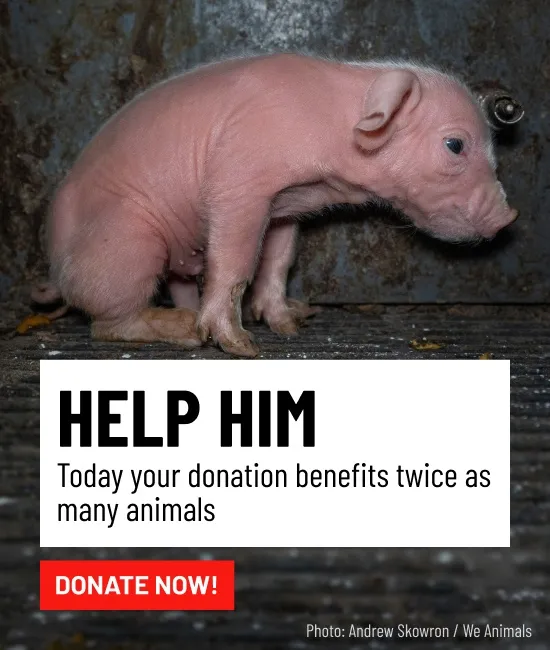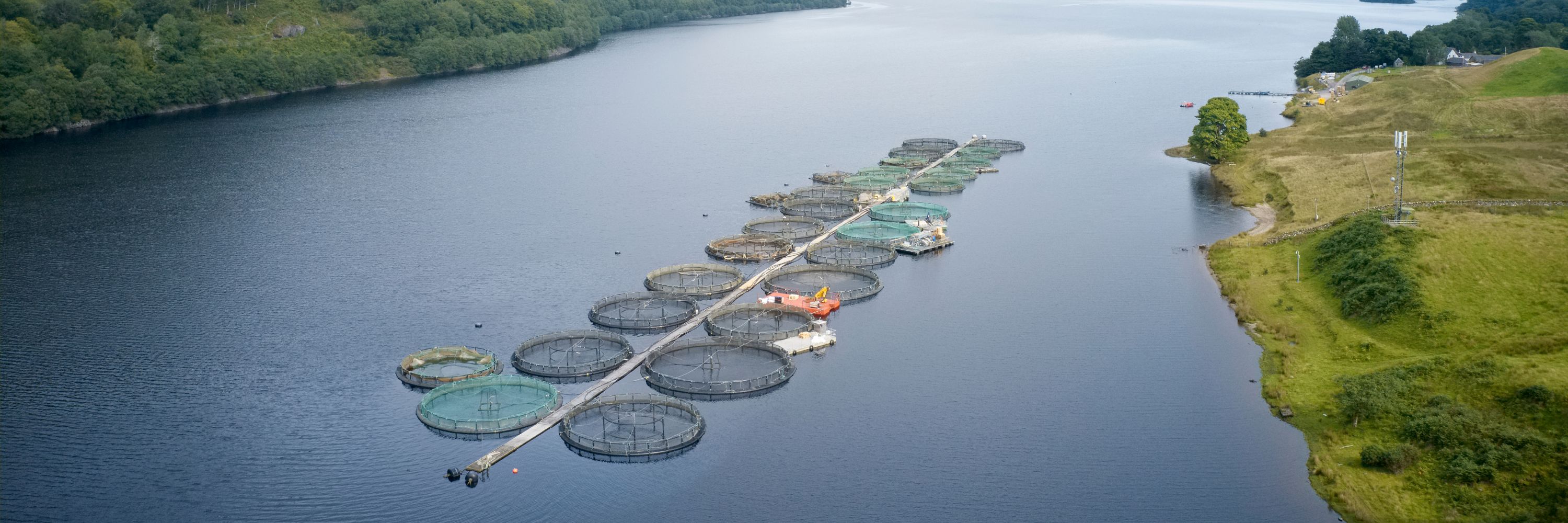
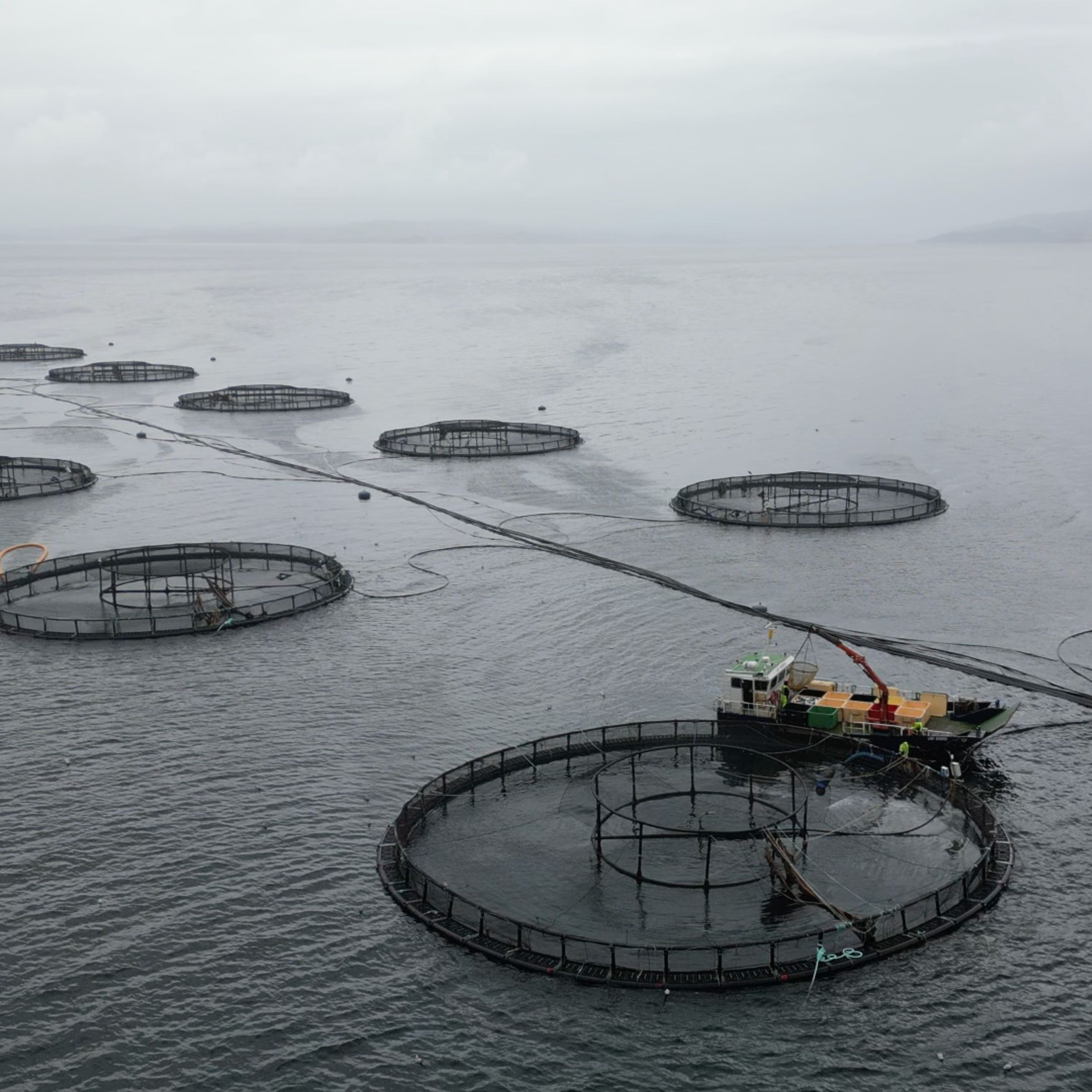
Is Fishing Cruel?
Animal Equality has been investigating the fish industry for many years. We’ve sent our investigators to fish farms, slaughterhouses and fishing boats to capture footage and uncover the truth.
Find out how fish are treated in the article below:
- Can fish feel pain?
- Are fish farms cruel?
- Is fishing at sea cruel?
- Are fish protected by the law?
- How can you help fish?
Can Fish Feel Pain?
There is now substantial evidence that, just like mammals and birds, fish experience conscious pain.
Fish have pain receptors which function similarly to ours. They detect potential harm and create the sensation of pain which encourages the fish to escape whatever is causing them harm, such as high temperatures, intense pressure, and chemicals.
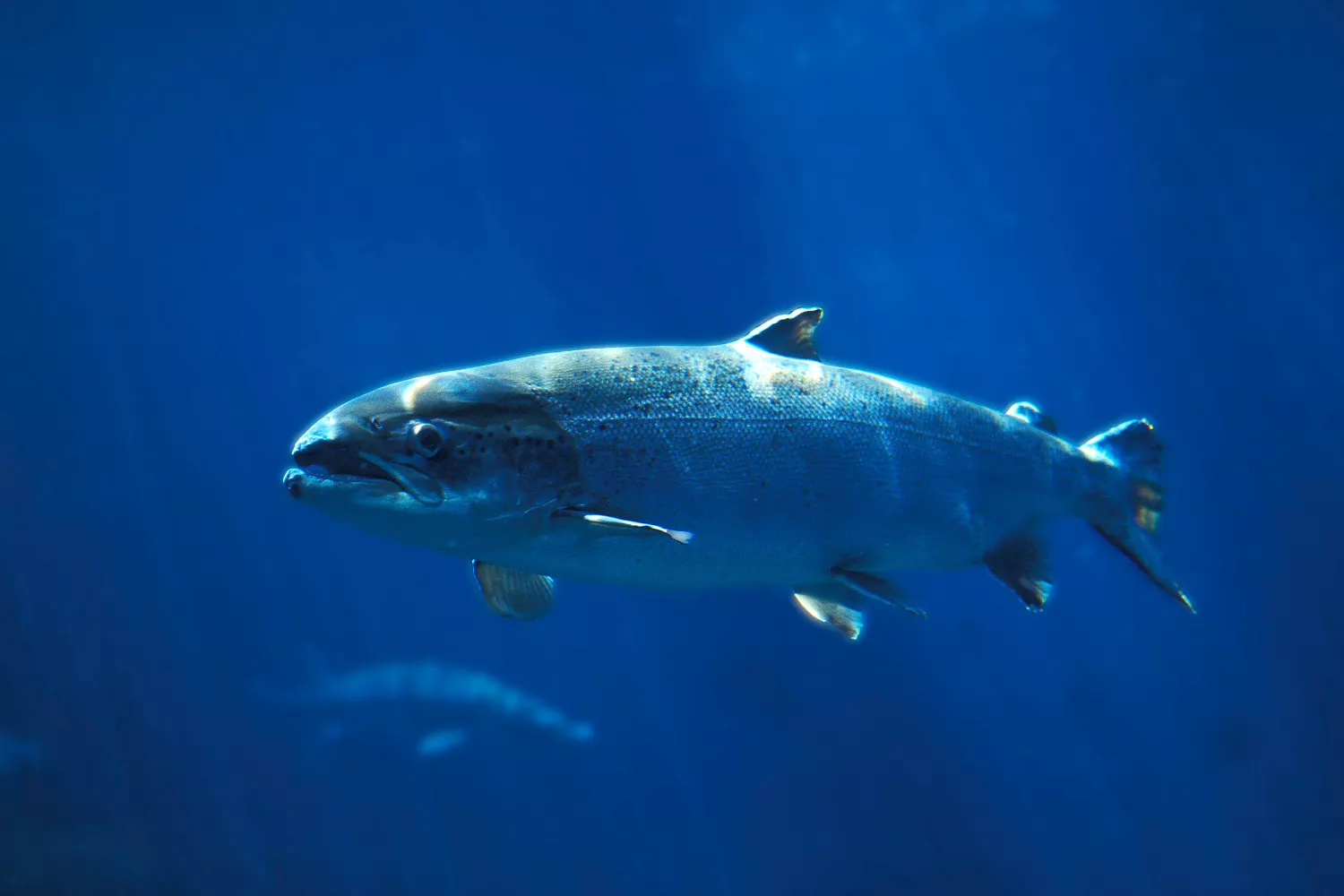
There is also growing evidence about the intelligence of fish species. Studies have shown that many fish learn and talk to each other. Some species are even able to use tools!
Despite the fact that fish feel pain, they’re often treated cruelly. They’re killed in horrible ways, including being beaten, left out of water to suffocate, exposed to carbon dioxide gas, exposed to very low temperatures on an ice bed, or having their gills slit so they bleed to death.
These procedures are often extremely cruel, causing prolonged suffering to fish.
Are Fish Farms Cruel?
In the UK, up to 77 million fish are farmed and killed each year. That’s approximately 8,790 per hour.
Salmon is the most commonly farmed fish in the UK, with most salmon farms located in Scotland.
Fish farms are usually located inside lakes or in the sea along the coast. The farms consist of huge nets which cage the fish together while water travels in and out. Depending on the weather, sea conditions can become rough, causing turbulence in the pens.
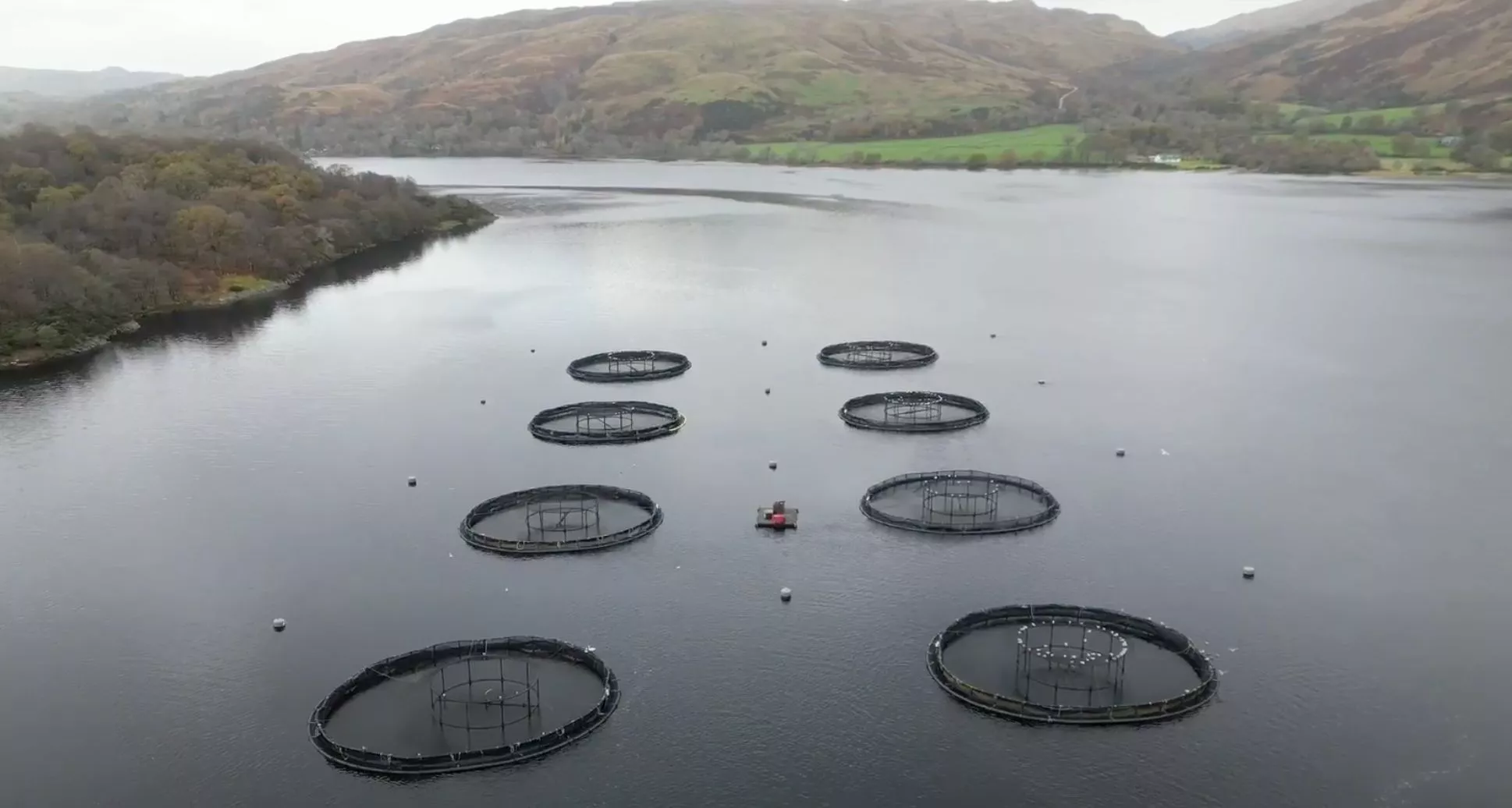
On the farms, fish are often crammed together. Many fish farms also suffer from infestations of sea lice which eat the fish’s skin while they’re alive.
In an attempt to fight sea lice, fish farmers resort to using chemicals or other rough treatments. They may also use species of so-called ‘cleaner fish’ who eat the sea lice from the salmon’s skin. But there are few laws to protect these cleaner fish and they will be killed along with the salmon when they are slaughtered.
In 2023, Animal Equality worked with The Observer to publish an exposé about fish deaths on salmon farms. The article drew attention to figures provided by fish industry membership body Salmon Scotland, which reported that 2.8 million salmon died on-farm in Scotland in September 2022 alone.
As discovered by animal advocate, Don Staniford of $camon $cotland, this wasn’t an isolated incident. His research found that, in 2022, the salmon company Bakkafrost reported cumulative death rates of 80.2%, 57.7%, 42.3% and 39.1% across several months. And in December 2021, Bakkafrost reported a staggering 82.1% cumulative mortality rate at its site in Druimyeon Bay, meaning four in five fish died before they made it to the slaughterhouse.
Many salmon die from sea lice infestations and chemical treatments. Severe weather conditions, disease, injuries, predation, and algal blooms also contribute to the deaths.
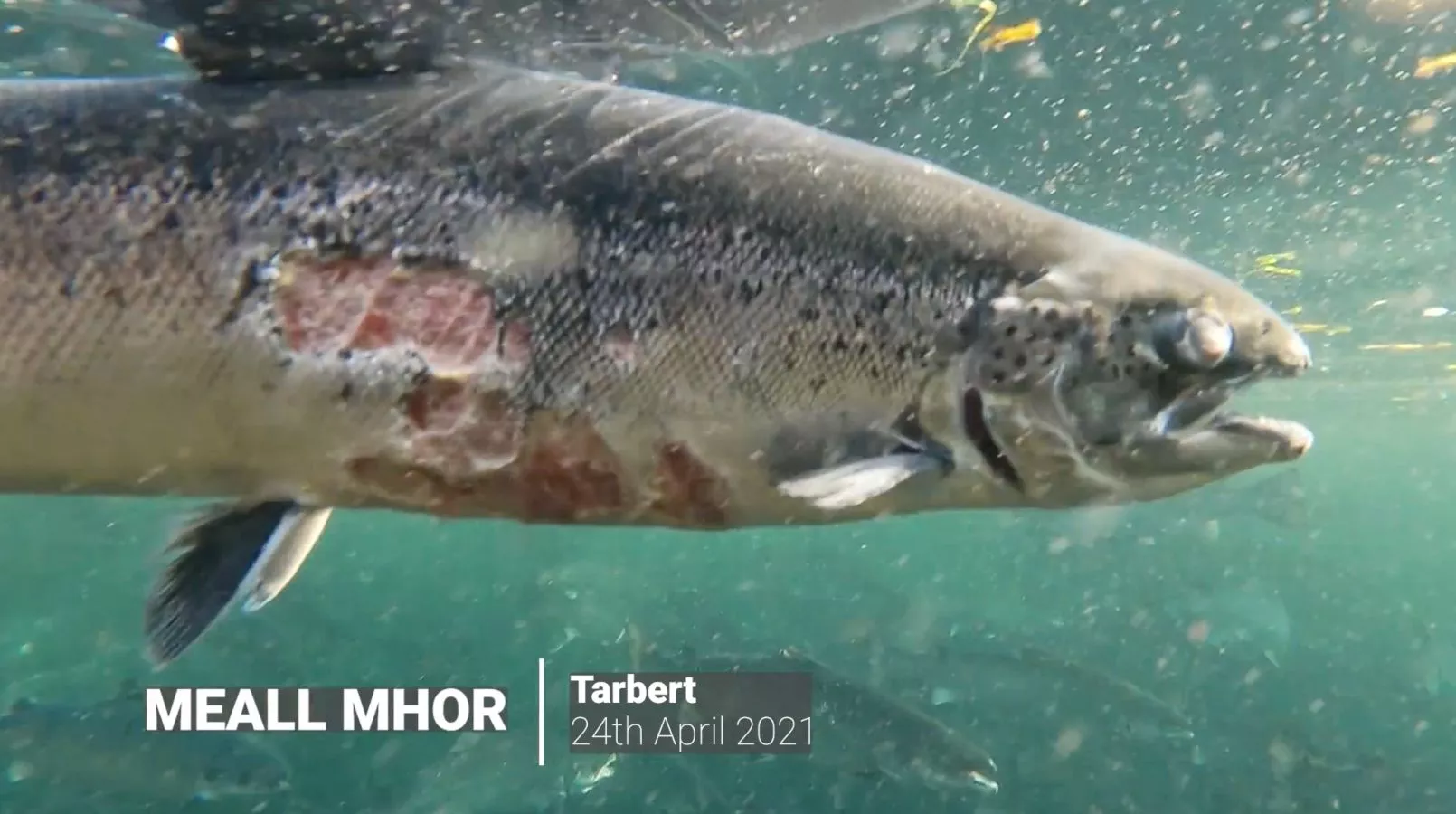
The fish who make it to the slaughterhouse will also suffer.
In 2021, Animal Equality released a first-of-its-kind investigation into a Scottish salmon slaughterhouse operated by Bakkafrost (then named The Scottish Salmon Company).
Our footage revealed salmon showing clear signs of prolonged suffering during the final moments of their short lives. Despite a stunning device being in place in the facility, significant numbers of salmon showed signs of consciousness at the time of the killing. This was verified by world-leading aquatic animal scientists and veterinarians.
Had Animal Equality not carried out an investigation into the industry, I very much doubt the suffering of these particular aquatic animals would have ever come to light. We should not be relying on non-profits to carry out what is essentially a public service – it’s the UK Government’s duty to protect the animals killed for human consumption and, currently, it is failing to carry out this basic duty of care.
Dr Lynne Sneddon, world-renowned aquatic animal expert, University of Gothenburg
Is Fishing At Sea Cruel?
In 2012, Animal Equality investigators went underwater to document the cruel and bloody slaughter of tuna in Italy. The footage showed tuna being caught with huge metal hooks and workers stabbing them with knives while they were alive and conscious.
Can you imagine how it would feel to bite down on a giant metal hook so it goes through the roof of your mouth?
In 2018, Animal Equality released footage captured during an investigation into intensive trawling off the coast of Sardinia. The footage showed fish being crushed to death as tonnes of other fish were caught in the huge nets above them. It also showed fish dying of suffocation, which in some cases took several minutes.
Are Fish Protected By The Law?
Fish have very few protections from the law.
According to the Animal Welfare Act (2006), fish are protected against ‘unnecessary suffering’ and farmers are required to ensure that their ‘needs are met’.
However, the law fails to provide specific rules and obligations. This leaves room for interpretation of what ‘unnecessary suffering’ means.
In practice, this means fish suffer and nothing meaningful is done to stop it.
In 2021, Animal Equality released footage captured inside a salmon slaughterhouse in Scotland showing workers cutting salmon’s gills while the salmon were fully conscious. The footage also showed workers throwing live salmon onto the slaughterhouse floor where they were left to slowly suffocate.
Until Animal Equality’s investigation, there were no routine inspections happening inside fish slaughterhouses in the UK. This is just one example of how the few laws which exist are not being properly applied and enforced.
How Can You Help Fish?
Every time you eat a plant-based meal instead of eating fish, you spare an animal from being killed. Leaving fish off your plate is one of the best things you can do to help them. You can find 16 delicious and easy-to-make plant-based recipes including a smoked ‘salmon’ bagel in Animal Equality’s free cookbook.

Protect Fish
Scientists confirm that fish feel pain and suffer. Protect these sensitive beings by choosing plant-based alternatives to animal food products.
Animal Equality is also working to protect fish and we need your support.
In 2021, we successfully pushed the Scottish Government to start routine inspections inside fish slaughterhouses to monitor fish welfare. There must be oversight over how workers and the fish industry treat fish in their final moments of life. But this is just a first step and much more must be done.
Animal Equality is now urging the Government to introduce stronger and more specific protections for fish, including installing CCTV cameras in fish slaughterhouses across the UK.
Help fish by signing our petition today. It only takes a few seconds!
Recommended

